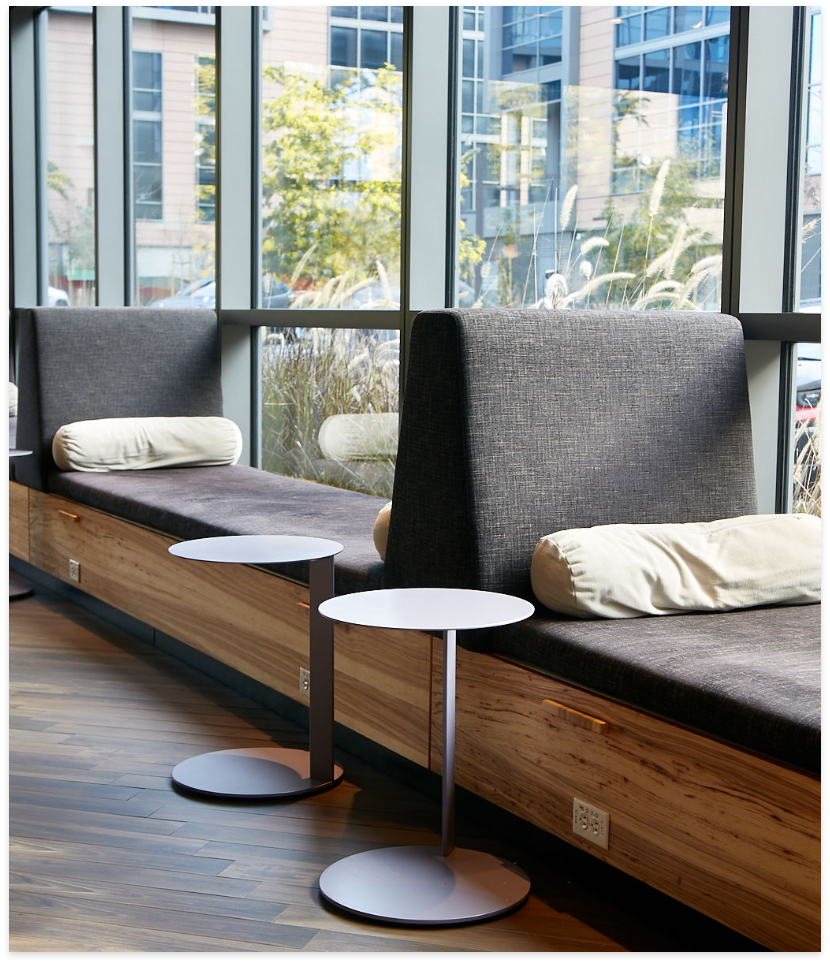Carpet tile, out of the box, must be flat, square and stable. If your installation does not fit this description then read on.
What causes planar instability?
Planar instability, that which prevents a modular flooring material, hard or soft surface from lying flat, is caused by internal forces generated by materials or layers in the flooring material, that exert forces or stress across or within the material, which create lifting or curling edges. This can occur on all four sides or two sides and is often in the “machine” direction or length, of the material.
If, for example, a product is quarter turned the lifted edges will alternate – North South to East West and vice versa with every other tile. Planar stability is influenced by the forces within the flooring material and by changes in heat or humidity. There are tests to detect or prove the condition exists such as the cycled humidity test for carpet tile.

Can planar instability be cured
Sometimes by back rolling the material the stresses within it can be overcome or broken allowing the material to be put back down and lay flat. This would be in the case of carpet tile. This process will not work on hard surface flooring that is already glued down as the adhesive is not releasable, obviously.
Fallacies of planar stability typically include the statement, normally by a manufacturer, that the installer did not use enough glue or the appropriate glue. Adhesive, especially for modular carpet (carpet tiles) is not meant to hold the carpet tile flat to the floor.
Carpet tile, out of the box, must be flat, square and stable. It should conform, or drape, onto the substrate on which it is placed, with or without adhesive. Adhesive was never meant to hold carpet tile flat. In fact, in years past, carpet tile could be installed using the grid or perimeter installation method. With these methods of installation adhesive was only applied around the perimeter of a room or in a grid, like the grids in a suspended ceiling tile, to stabilize the lateral movement of the carpet tile, not to hold it flat to the floor; it did that on its own, as it still should.
In a recent case, a hard surface flooring material was installed and within 24 hours it exhibited curling on the edge. The job was stopped, rightfully so, the manufacturer contacted and a representative sent to the site. The installation naturally was questioned. Mind you the installation contractor and his installers have had years of experience installing this product. The manufacturer attempted the installation with the same results. This scenario repeated itself three times.
Wouldn’t you think that if the same parties all had a problem installing the product that the product should be called into question and not the installation? Unfortunately, the obvious reasoning, logic and common sense seemed to escape this case as it was contested. When it was explained why this happened in court the judge even stated, “isn’t the glue supposed to hold the flooring edges down?”
The answer, of course, is no. Despite the argument to the contrary, words do not change the laws of physics. This is all too often overlooked or, more to the point, ignored. If an object generates enough force across the plane, whether flooring material or steel, due to instability in the material, glue will certainly not hold it flat, nor will nails, bolts or welds at the edges.

The answer is absolutely. Again, the glue only holds the material in place, it is not meant to hold the material flat. The forces are too great combating the tacky adhesive. It just amazes me when people can’t grasp this concept thinking that adhesive will hold the product flat. And, if the adhesive does hold the product flat, it will have so much grab that it will be a long day trying to get the stuff off the floor.
This is a learning curve. In the case of hard surface flooring, and how that product could have planar instability, it too is undergoing a greening. Not only by components used in the makeup of the product but by separately applied backings being laminated onto the back of the flooring that is not part of a monolithic, solid or homogeneous blend. They are an addition to the product and therefore have their own forces, those of either expansion or contraction, which will pull on the plane of the material and lift the edges.
Remember this, Newton’s law of motion, “for every action there is an equal and opposite reaction.” I’m not going to argue with Sir Isaac Newton and neither should anyone else. This is what’s happening and eventually we, as an industry, will come up with a balance in the products to prevent planar instability. Until that time comes, there will be a roller coaster ride of problems. This is not intentional and it is being hard fought to contain. But until then let’s not lose sight of the fact that the problem exists and words, substrate conditions, residual old adhesive, super sticky adhesive or someone’s opinion is not the reason for planar instability. It’s the product.
Originally published in The Commercial Flooring Report, Volume 58
